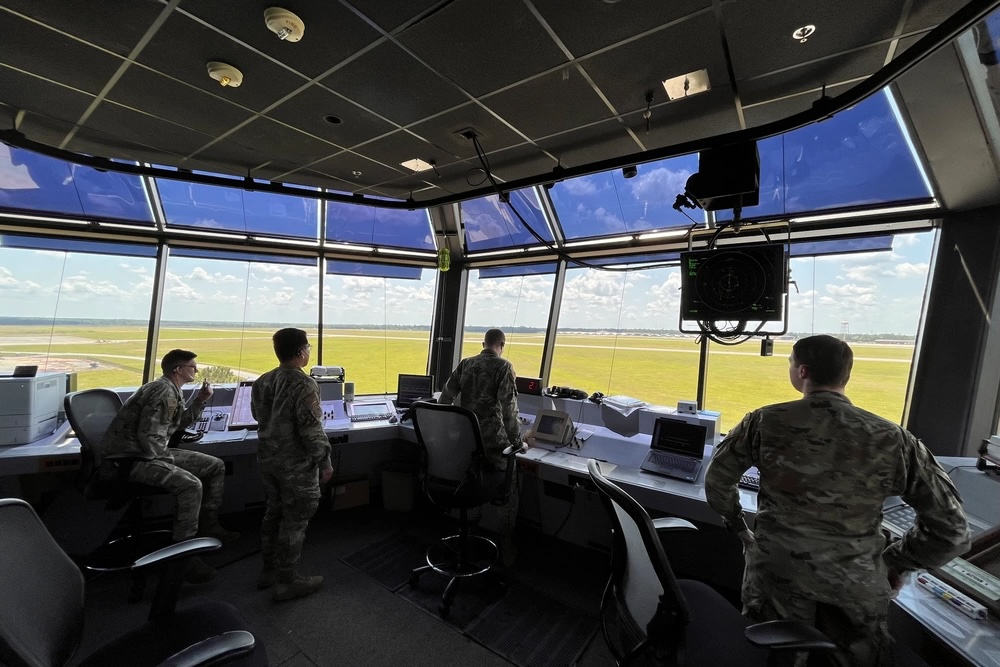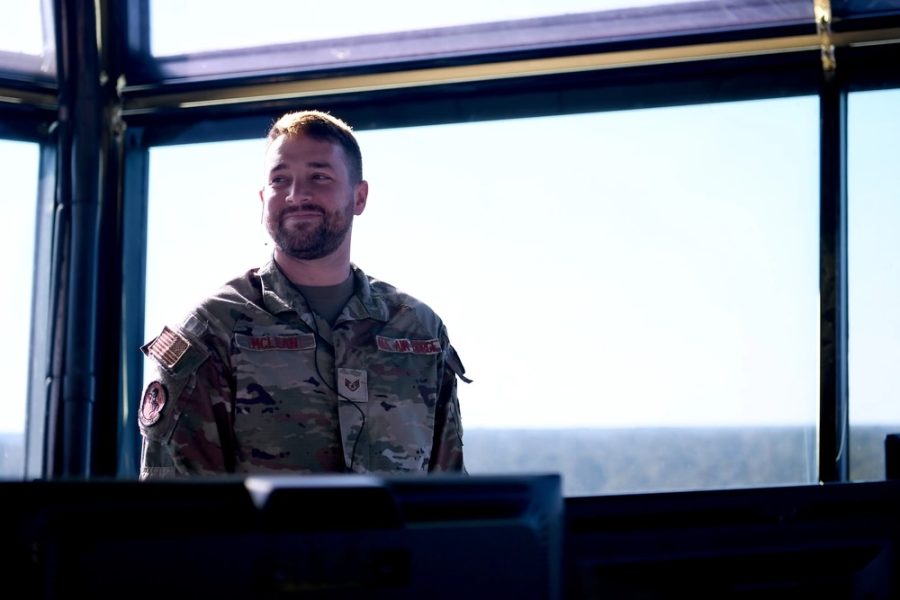An Air Traffic Control (ATC) Airman at Shaw Air Force Base, S.C. recently saved the life of a civilian Cessna pilot and his passenger when the pilot experienced an in-flight emergency. Staff Sgt. Samuel McLean, ATC watch supervisor for the 20th Operations Support Squadron, was the only air traffic controller in the tower overlooking Shaw on Sept. 19 when a call came in via an unusual line.
“I’m in a lot of trouble,” the caller told McLean, according to a press release published Dec. 13.
The caller was an 18-year-old flying a Cessna 550 Citation II, a small two-engine business jet. The pilot had just left Sumter Airport for Columbia, S.C. with his cousin riding as a passenger, when the Cessna began leaking fuel and the radio and transponder stopped working. The malfunctions amounted to “a catastrophic failure,” the release said, especially with the aircraft only about 580 feet off the ground. Without a working radio, the pilot used his cell phone to call the ATC tower at Shaw.
“He sounded absolutely terrified,” McLean recalled.
With no working transponder or radio, the McLean could not find the Cessna on radar, so the pilot cited nearby landmarks to approximate his location, which was close to McEntire Joint National Guard Base, about 20 miles west of Shaw. The aircraft was moving westbound at a heading of 290 degrees. The pilot wanted to go back to Sumter, but was going the wrong way.
McLean directed the pilot to turn back east on a heading of 110 degrees. Meanwhile, he also coordinated with Radar Approach Control (RAPCON), which provides aircraft guidance at greater ranges than the ATC tower, to reroute an F-16 into a high holding pattern. When he at last spotted the Cessna over a tree line, he recommended headings based on his line-of-sight view, “a difficult feat to accomplish because vectoring relies heavily on the use of radar,” as the release noted.
“I kept the pilot on the phone until he saw Shaw,” the Airman said. “With his altitude being so low, he still couldn’t see Sumter.”
Over some 30 minutes, McLean was able to guide the pilot to the Sumter airport, hanging up only as the pilot prepared to land. Once on the ground, he called McLean back and let him know he landed safely.
“It was definitely the craziest thing that I’ve experienced,” McLean said. “And hopefully the craziest thing I’ll ever experience.”

Air Force ATCs like McLean learn to adapt quickly to new situations during their 72-day training course at Keesler Air Force Base, Miss.
“Due to the hectic nature of the job, it can be overwhelming at times,” the Air Force states on its website. “Air Traffic Control, whether military or civilian, is also commonly listed among the top five most stressful jobs. Applicants should possess a level head and be able to work well under stress.”
Air Force ATCs have a long history of saving lives in the sky. In 2020, Wendy Smith, a civilian Air Force controller at Kirtland Air Force Base, N.M., saved the lives of six CV-22 Osprey crewmen when she noticed something was wrong with the aircraft’s rotor blades as it climbed away. In 2008, Senior Airman Angela Huguley, another ATC, saved 19 people when she realized an Army RC-12 reconnaissance plane was about to mistakenly land on a closed runway amid poor visibility conditions. She quickly ordered the plane to abort the landing, avoiding “a catastrophic mishap and loss of life.”
There are so many such stories that the Air Force awards quarterly awards, the Lt. Gen. Gordon A. Blake Aircraft Save Award and Aircraft Assist Award, to recognize ATCs and airfield managers who save imperiled airborne aircraft or aircraft endangered on the ground. The award’s namesake was a base operations officer at Hickam Field, Hawaii, who received the Silver Star for directing a dozen B-17 bombers to safety during the Japanese attack on Pearl Harbor on Dec. 7, 1941.
Back at Shaw, McLean received the Air and Space Achievement Medal for the Cessna save. McLean’s fellow watch supervisor, Brian Egger, praised the Airman’s abilities.
“McLean’s ‘out-of-the-box’ thinking and his immediate reactions directly saved the lives of two civilians, and prevented the aircraft from crashing,” Egger said in the release.
